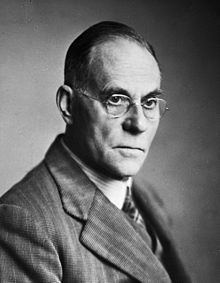Nationality England Role Physician | Name Leonard Colebrook | |
 | ||
Born 2 March 1883Guildford, Surrey ( 1883-03-02 ) Notable awards Fellow of the Royal Society (1945)FRCSFRCOGBlair Bell medal(1955)Edward Jenner Medal (1962) Similar People Almroth Wright, Peter Medawar, Howard Florey, Karl Popper | ||
Leonard Colebrook FRS ((1883-03-02)2 March 1883 – 27 September 1967(1967-09-27)) was an English physician and bacteriologist.
Contents
Education
Colebrook was educated at the Grammar School in Guildford, Westbourne High School in Bournemouth and Christ's College Blackheath in Kent. Colebrook started his medical training at the London Hospital Medical College after which he won a scholarship to St Mary's Hospital, London.
Career
in 1935 Colebrook showed Prontosil was effective against haemolytic streptococcus in childbirth and hence a cure for puerperal fever. He campaigned for the use of gloves, mask, and gown before touching patients and showed that chloroxylenol was both an effective disinfectant and much superior to soap and water for hand cleansing. With his sister Dora, he showed that streptococci were more likely to originate from hospital staff than from the patient.
In 1943 the Glasgow Royal Infirmary MRC Burns Unit which he headed moved to Birmingham Accident Hospital. where he established the practice of placing the patients in a near sterile environment.
Family
Colebrook was born in Guildford, Surrey to May Colebrook (1838-1896) and Mary nee Gower (1845- ). His father and elder brothers were butchers by trade.
In 1914 he married Dorothy Scarlett Campbell (1875-1941) daughter of John Scarlett Campbell (1828-1897), a judge in the Indian service. After her death he married again, in 1946, Vera Locke (1903-1984), widow of Edward Robert Scovell (1881-1944). There were no children from either marriage.
Hi died in 1967 at his home in Farnham Common, Buckinghamshire.
